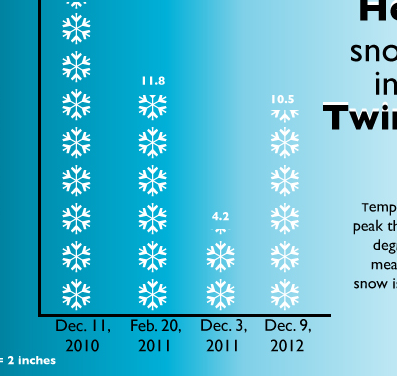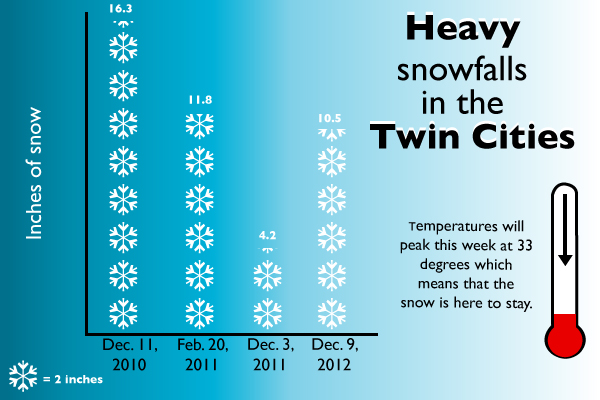Hundreds of plows continue to spew tons of salt across Twin Cities roads and highways in an effort to improve driving conditions, but the effort can only go as far as the weather allows.
Commuters heading home Tuesday, should expect heavy traffic and delays similar to Monday and early Tuesday if temperatures remain below freezing and the sun stays hidden — salt simply can’t do its job in the cold and dark.
“We are finding as temperatures go up things get better,” said Kent Barnard, a spokesman for the Minnesota Department of Transportation covering the metro area.
“We’ll have a halfway-decent afternoon rush hour if that can happen,” he said.
But the weather was not cooperating by early afternoon: Temperatures are not expected above 20 degrees and up to a half-inch of snow is expected before nightfall, according to the National Weather Service.
Unseasonable warmth ushered in Sunday’s storm, which dropped more than a foot of snow in much of the area. But the storm finished with windchills below zero, creating a hard layer of ice and compacted snow under heavy accumulation, Barnard said.
St. Paul, facing complaints that it was skimping on salt to melt snow and ice, said on its website that it had used 700 tons of salt on streets. “This is almost three times the amount of salt we use in a typical snow event,” the city said in its early-afternoon road condition update Tuesday.
“As the temperatures rise and the sun comes out (which hasn’t happened yet) the roads will improve but it is going to take mother nature’s help and time,” said the update, signed by city engineer John Maczko.
MnDOT snow and ice supervisors reported some “breaking” of the ice and compacted snow early Tuesday afternoon, but trouble spots still lingered.
While major arteries are mostly cleared, the on-ramps, loops and county roads feeding heavily traveled routes were posing problems for MnDOT and county and city snow crews.
Metro Mobility warned riders of “significant delays” because of road conditions around the metro area and urged them to cancel trips that were not critical.
At noon, about 66 percent of metro buses were running on schedule, with an average delay of 10 minutes, according to Metro Transit.


